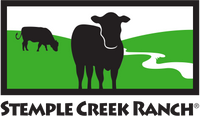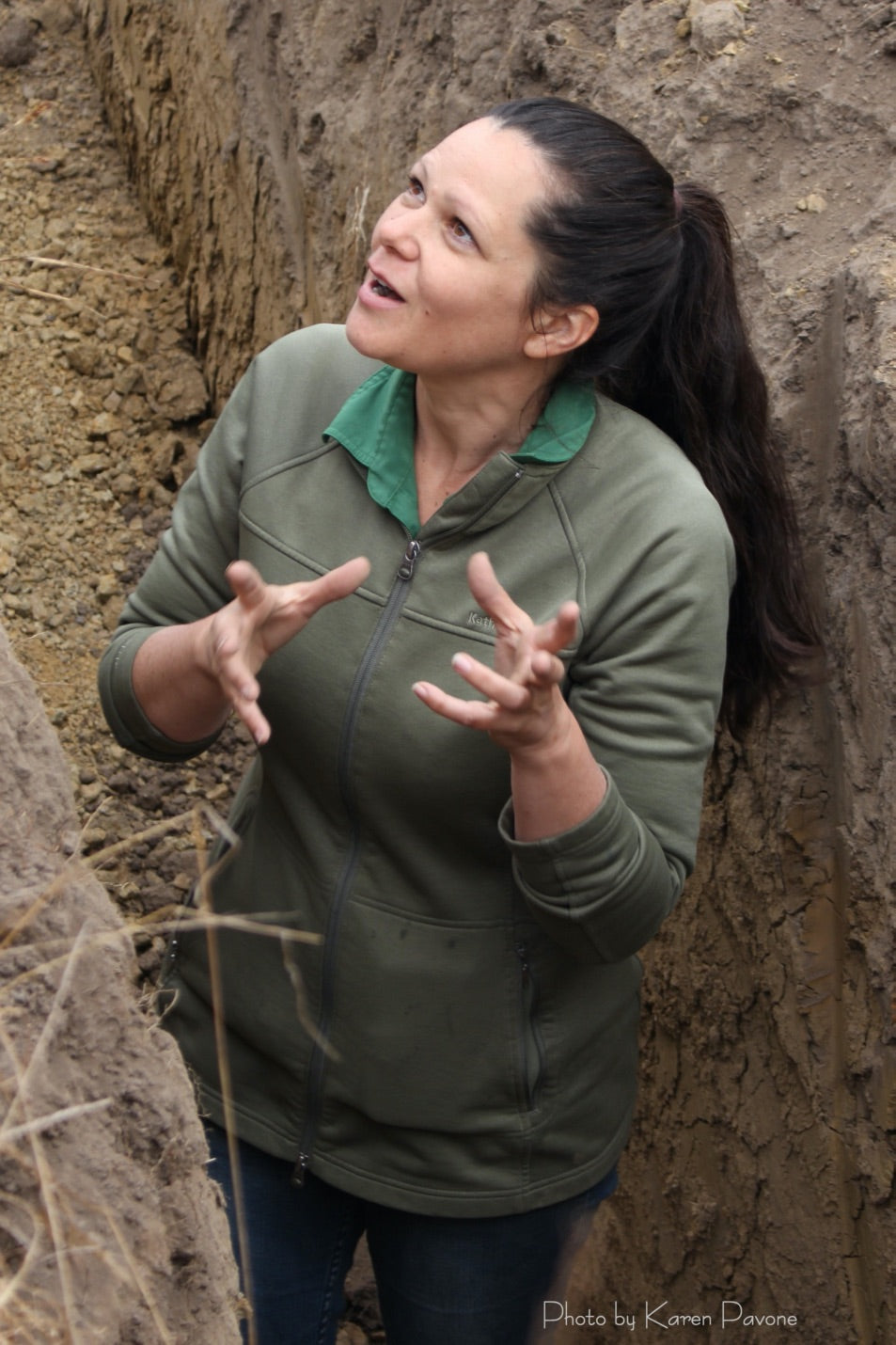
Talking Soil
The soil is our lifeblood and the source of our livelihood. Since we are committed to raising livestock on a diet of natural grass, we must constantly strive to manage our resources as best we can. Our animals depend on the health and productivity of our fields for their food. Without them, we would have no business.
To gain a better understanding of where we are and where we need to go, we decided to “dig deep” with visiting New Zealand soil scientist and bio-education specialist, Nicole Masters, from Integrity Soils.
Twenty-seven ranchers, from all over the United States, joined us for a special three day seminar to learn about Nicole’s multi-faceted approach to soil management. This was a unique opportunity to play in the soil and discover what it is telling us about the viability of the land.
“When you are ill, you go to a doctor,” says Masters. “Like your body, your farm is a complex ecosystem that needs regular expert attention and checkups.” Lucky for us, she is an expert at reading the signs beneath the surface. This promised to be an enlightening journey!
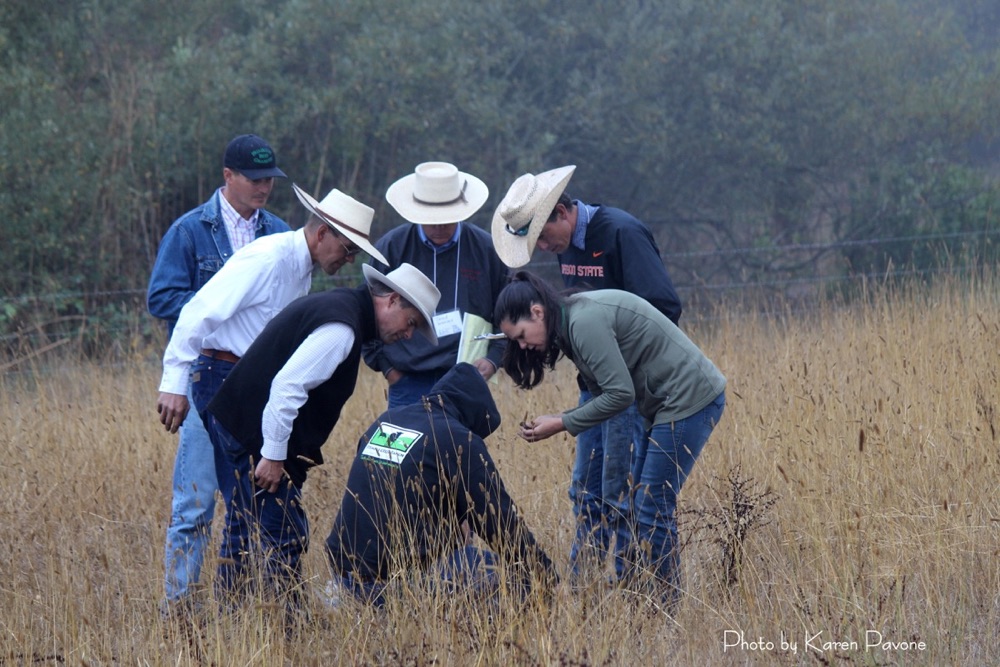
Our barn became a classroom as Masters talked to us about microbes and nitrates, minerals and weeds. It’s amazing how much you can tell about the condition of soil from the plants that grow in the field. By learning to recognize what the signs tell us, we can assess where deficiencies lie and begin to formulate long term solutions that will dramatically improve the productivity of our forage.
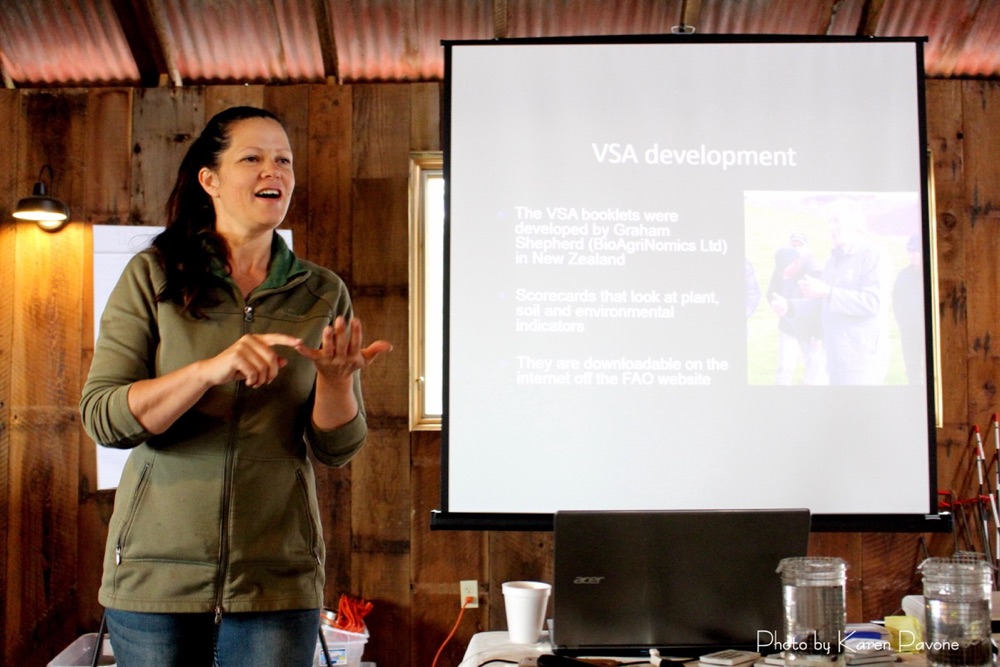
We break into groups and set out into the field armed with a VSA (Visual Soil Assessment) scorecard developed by the Food & Agricultural Organization of the United Nations. This guide provides quick and simple universal markers for assessing the quality of soil health based on specific indicators. We make our way to one of three trenches, dug in advance, at different locations around the property. Each trench is an underground window to our soil.
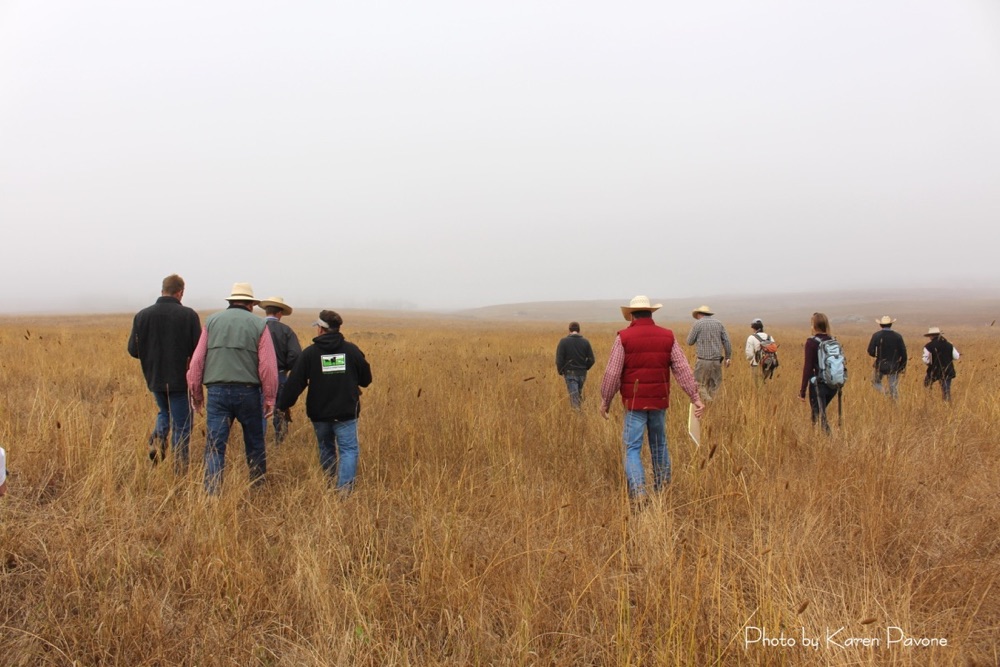

Masters finds her way to the bottom and begins scouring the layers of earth for clues. We dig out soil samples from different levels of strata to compare what’s going on.
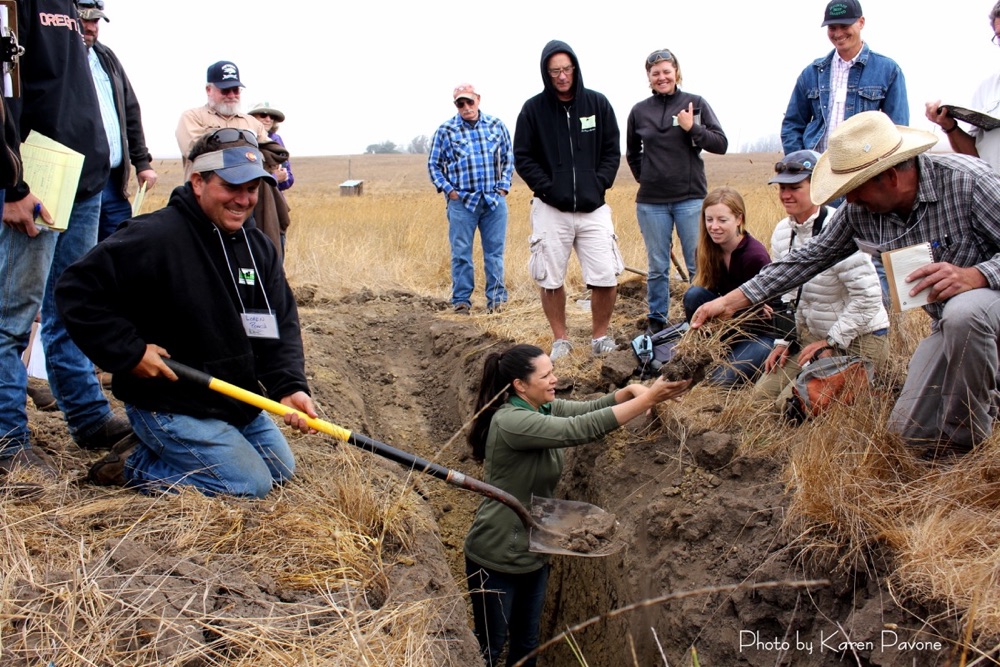
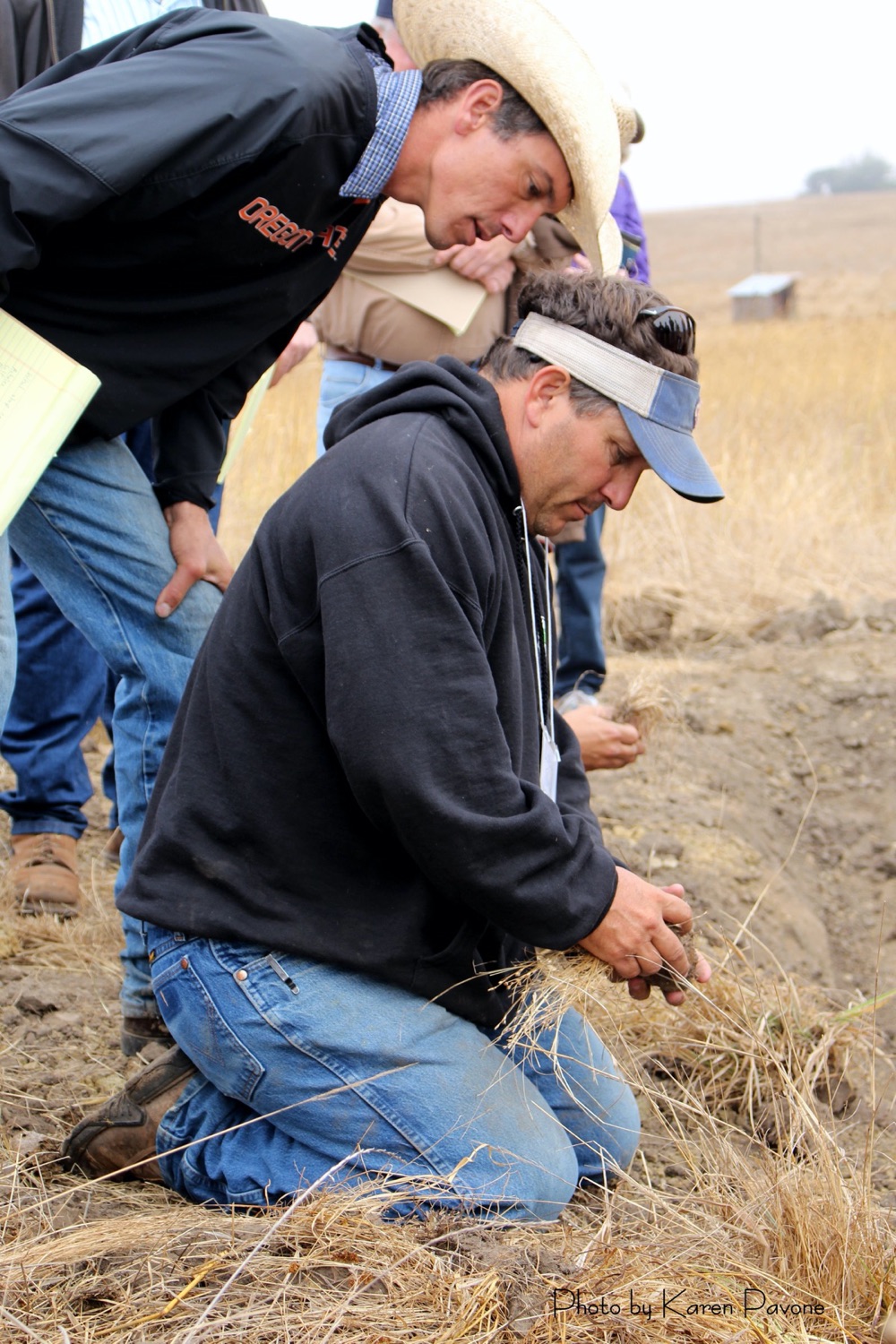
This is gritty business. She invites us to wet a small clod of earth and rub the dirt in our hands forming a ball. Does it fracture when pressed? What color is it? How does it smell? What is its porosity? We hold the ball of soil to our ears and listen intently for the sound it makes when rubbed. This is an incredibly tactile experience!
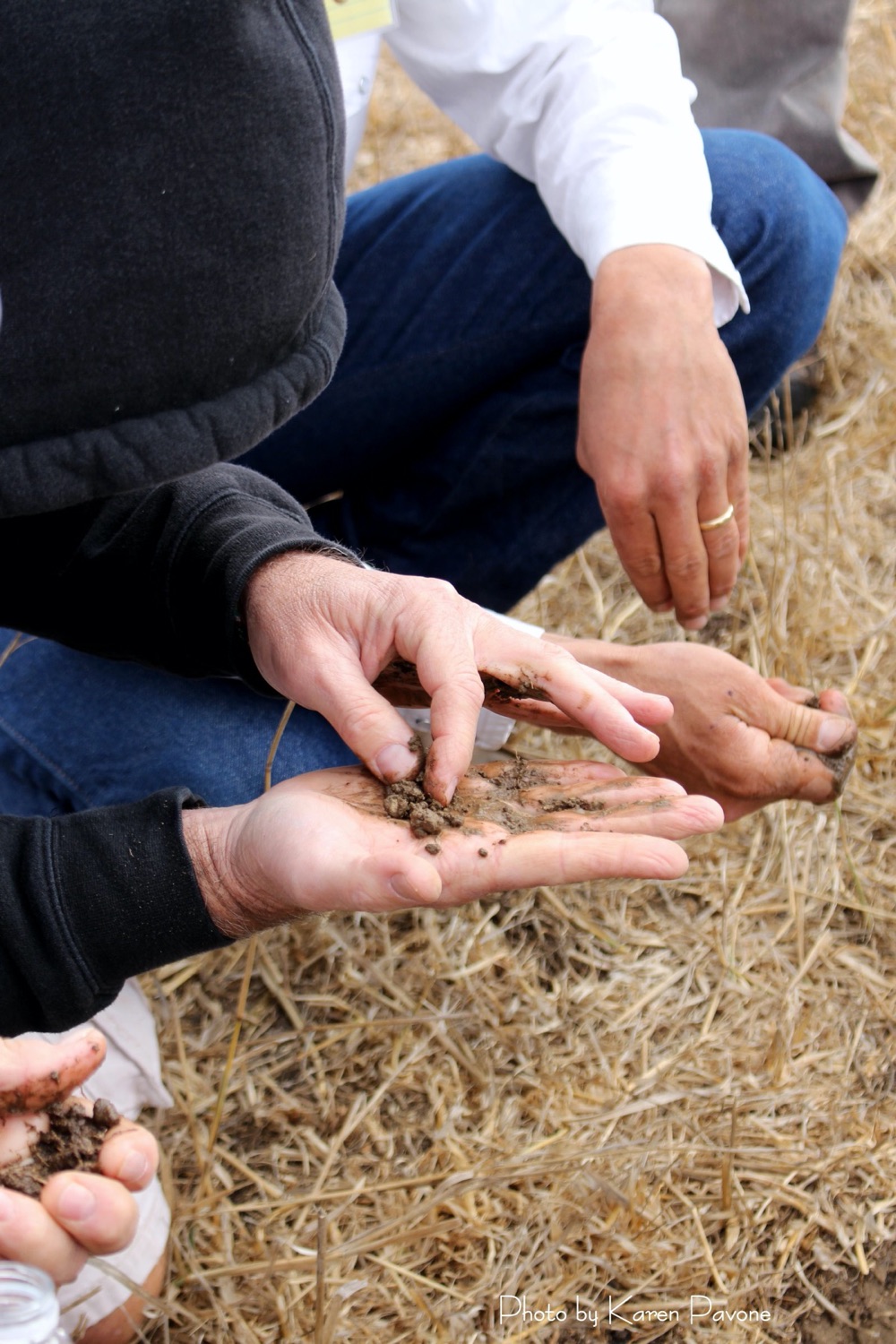
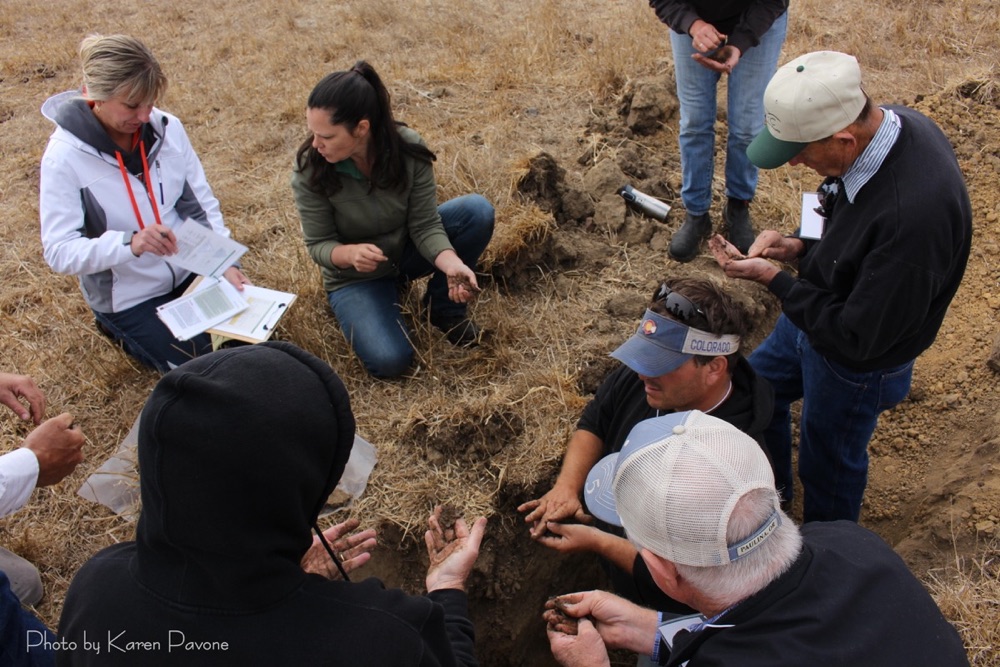
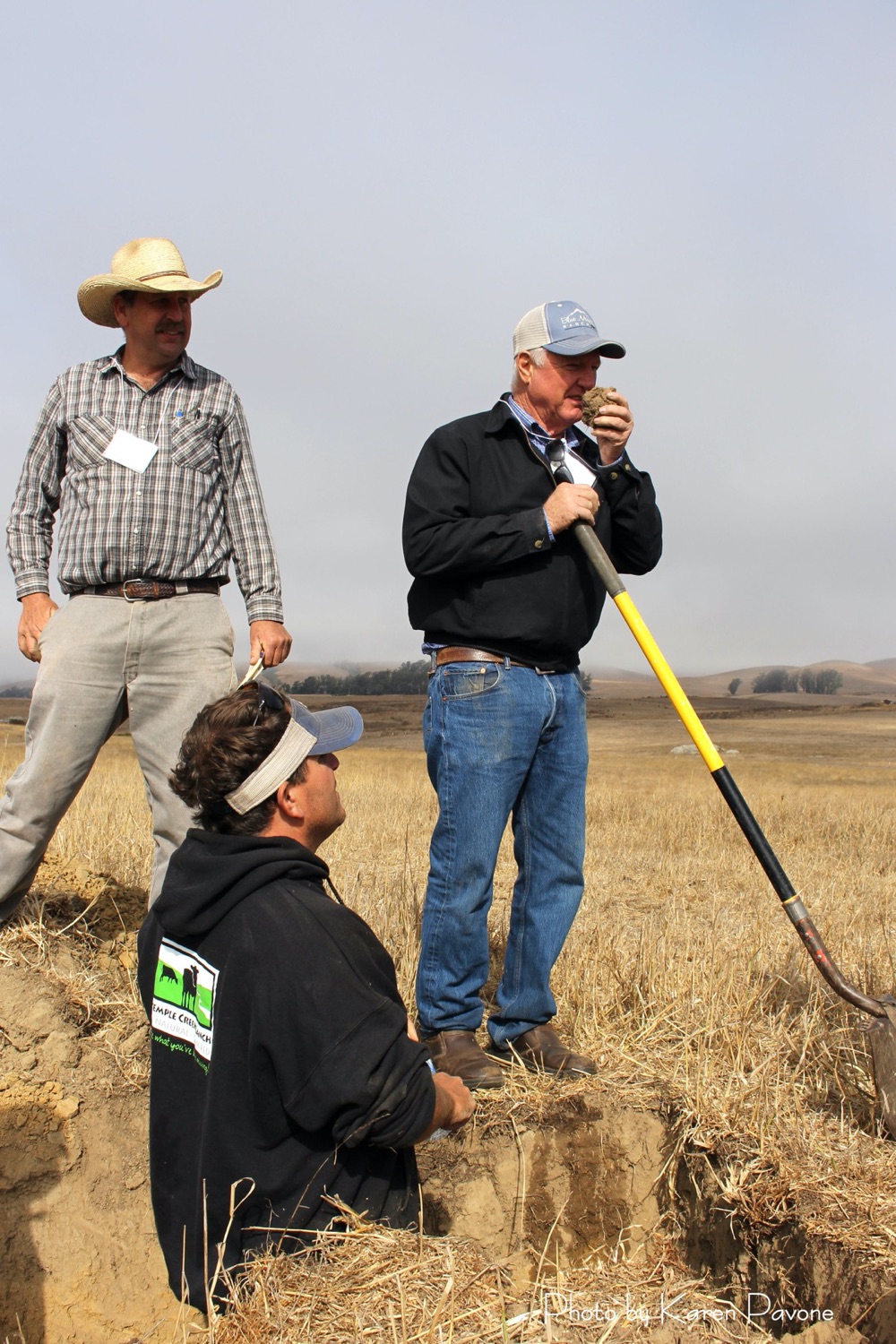

We evaluate each metric on the scorecard and add the indicators together to get an overall soil quality index. Then we move to another trench in an area of the property untouched by farming to get a comparison.
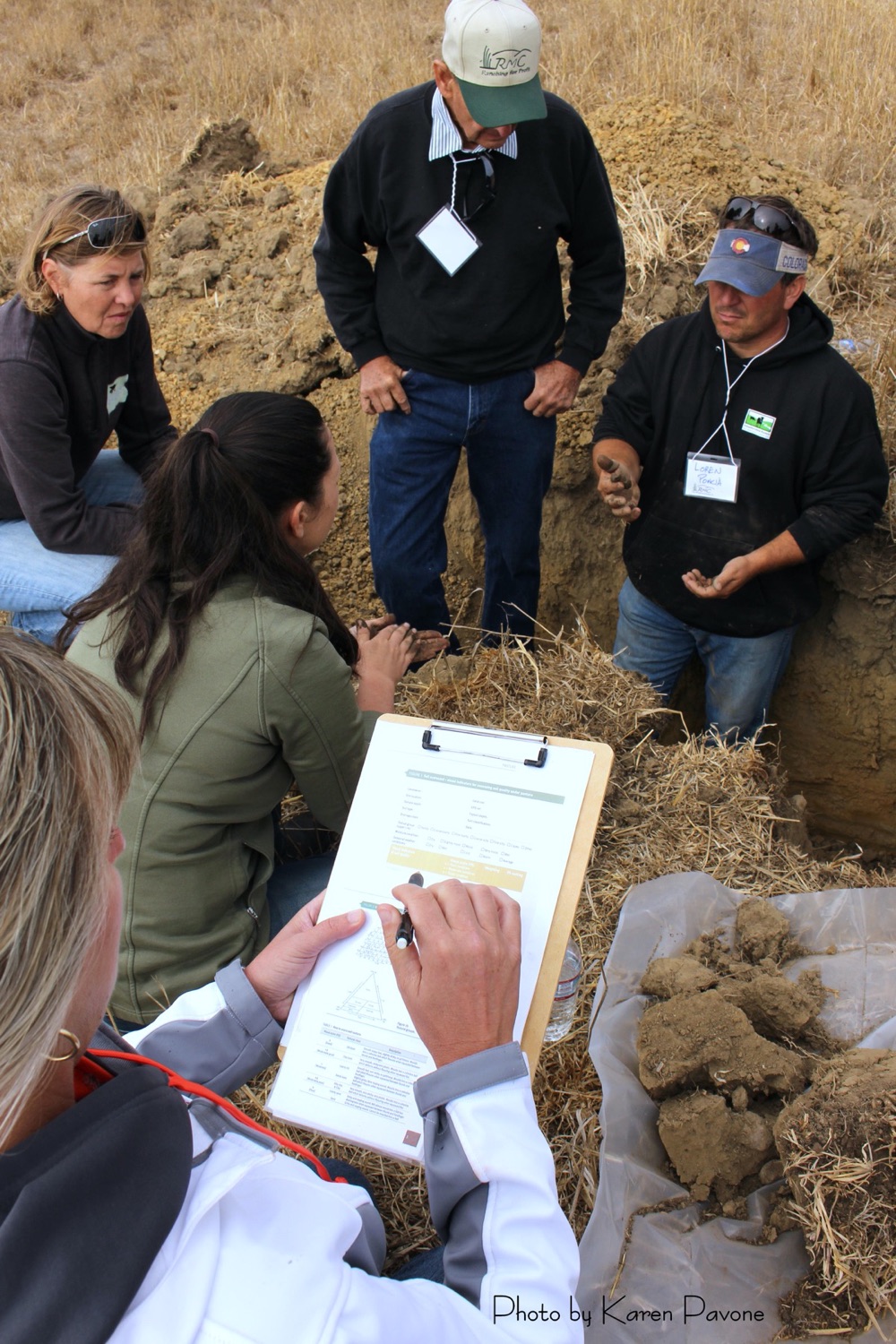
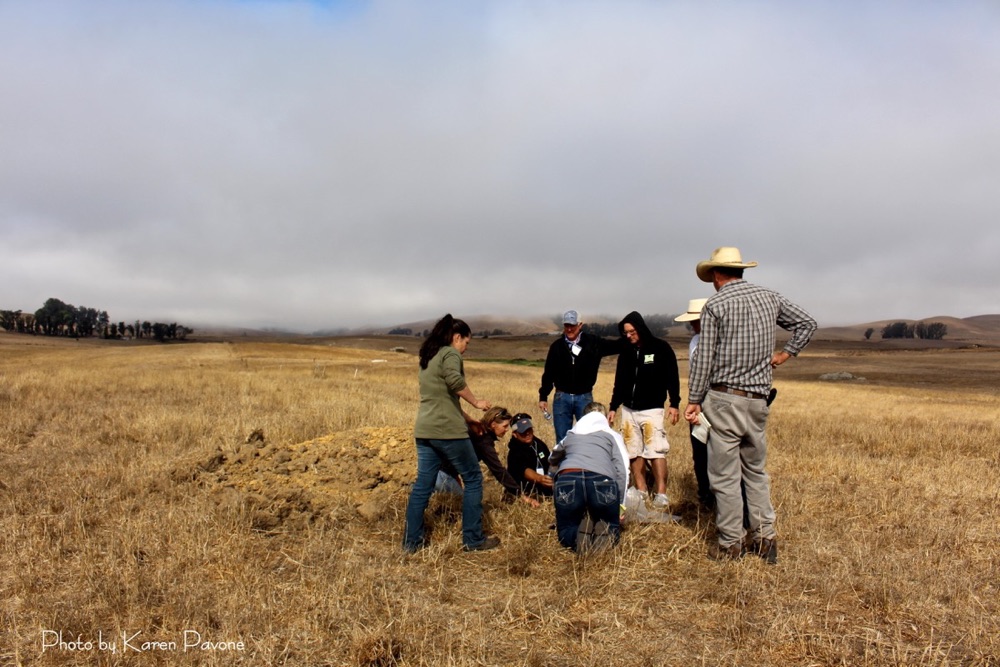
The valuable insights gained during this process will help us dramatically improve our soil composition by increasing our organic matter and soil carbon and our soil's water holding capacity. This will help build the long term sustainability of our land. Thank you, Nicole, for opening our eyes to the possibilities that lie beneath the surface.
